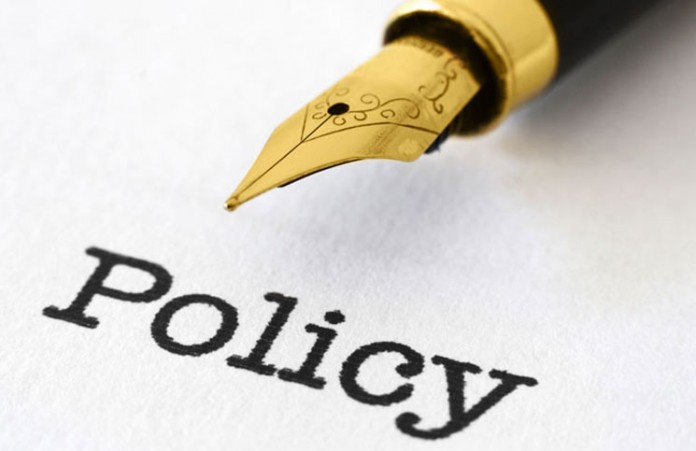This article has been written by Ipsita Acharya pursuing an Executive Certificate Course in International Labour Laws & Compliance: US, UK, Canada, Singapore, Dubai and edited by Shashwat Kaushik.
This article has been published by Sneha Mahawar.
Table of Contents
Introduction
In order to maintain harmony within our society, we need a legal system that establishes law and order. A society must abide by these rules and regulations; likewise, organisations need policies to maintain a healthy relationship within. Among all resources, human resources are the most crucial resource found on the earth and managing them is the toughest job. That’s why, in an organisation, there is a HR department to specifically handle the most important asset, i.e., human resources.
What are organisational policies
Human resource policies can be defined as the guidelines to perform different functions that an organisation incorporates to manage its assets. HR policies are an integral part of an organisation because they provide an outline of the workplace culture and assist in making consistent decisions for the welfare of the organisation and its employees. When a company implements strong policies, it reflects a fair work culture that will meet the standards of corporate governance.
Function of policies
Although policies may differ across various organisations, their core purpose remains the same. They help employees stay on track and companies reach their goals while avoiding unwanted occurrences. The staff are expected to perform as per these guidelines. Policies help to maintain equality amongst all, as each one is bound by the defined rules; no one can create their own rules.
How to decide which policies are required for your organisation
Effective HR policy formulation does not employ a one-size-fits-all model. It’s totally based on the unique needs and characteristics of the organisation and its workforce. While deciding the HR policy, the following things have to be kept in mind:
- The company’s mission and vision will be the priority while framing the policy.
- You have to ensure managers have the tools and resources necessary to implement and enforce the policy.
- The introduced policy must serve the real needs and concerns affecting the company.
- It should be consistent regarding the values and ethics of the organisation.
- If there is a legal obligation to create a policy, you have to develop a policy that complies with those specifications.
- Too much discretionary power with managers impacts the working environment and accomplishment of business goals. You must design policies that encourage employee inclusion and engagement in corporate decision-making.
It’s an investment that can pay large dividends in increased productivity and minimised litigation. HR policies are the essential component of your comprehensive people strategy. Many organisations do not have their own HR policies, however whether you are a big company or a small business with a handful of employees, HR issues will undoubtedly arise. You must be prepared beforehand.
How policies are different from procedures
Policies and procedures go hand in hand but are not interchangeable. In plain terms, policy is “what to do” and procedure is “how to do”. Together, it allows them to know the culture the organisation is striving for, the acceptable behaviours, and how to achieve them.
A policy is a predesigned guidelines for business strategies and objectives. It plays a very important role in connecting the organisation’s vision and mission with the day-to-day operations. Policies guide the decision-makers to solve any dispute effectively and quickly.
A procedure explains a specific action plan for carrying out a policy. In simple terms, the procedure is a road map. They eliminate common misunderstandings by identifying job responsibilities and establishing boundaries for those jobs. Procedures enable managers to control events and issues in advance to prevent the organisation from making costly decisions.
To operate a company smoothly and effectively, there must be a set of policies and procedures. They reduce the risk of liability and promote consistency across the organisation.
Formulation and implementation of policies
Analysing the need of a policy
Firstly, you have to understand the needs of the policy and decide which policies you have to frame as per the nature and work-culture of your organisation. You have to keep in mind the statutory obligations while drafting the policies.
If a policy is drafted due to some statutory obligation, then you must collect all the related information that is required by law to be included in the policy.
In the case of other policies, you can get an idea from the samples available on various platforms. Then, as per your needs, you must make the amendments. You must understand the legal implications before making the amendments.
Companies involved in direct sales must be informed about the payment and return/ refund policies for customers as well.
Clarity of the purpose
Policies are a tool to structure the relationship between the employees and the consultant. Whether it is good conduct or bad conduct, predetermined consequences must be there. How to deal with misconduct, how to encourage good deeds by rewarding them, etc., should be included in the policies. A thorough research work must be done beforehand, as well as taking suggestions from the concerned manager, employees and related persons to develop a strong policy.
Drafting the policy
A balance needs to be maintained between covering all contingencies that can arise and letting the employees grow in a free environment.
The following things should be kept in mind while drafting policy:
- It should be respectful and welcoming to the diversified employees.
- Keep the sentences small, simple and error free.
- You should keep it brief and to the point.
- A realistic approach should be maintained while developing the policy.
- Consequences must be straight and clear, without any ambiguity.
- After making the first draft, you should share it with all the concerned people for their expert suggestions and insights.
- Ensure that the policy has been understood by the concerned people in the same way you want them to understand.
- After observing the legal implications, you can prepare the final draft.
Check the accessibility
Once the final drafting is done, the policy must be appropriately communicated to all the present stakeholders and the employees to whom it applies. For a better understanding of the policy, proper training must be provided. Also, make sure that it is included in a system/ process by which relevant staff members can incorporate and share it with others to whom it is applicable from time to time.
Regular review and amendments accordingly
Policy framing is not a one-time process. No policy is foolproof and it needs to be amended as per the changing laws, needs and circumstances in the company. Make sure that the policies are periodically reviewed and amended accordingly. You must ensure that all the concerned people get the change notifications immediately.
The importance of policies
By now, we have somehow understood the functions and uses of the policies in maintaining the work culture and HR strategy in an organisation. Let’s discuss it in a little depth to understand it better. The importance of HR policies is as follows:
Increase compliance
One of the primary functions of human resource policies is to make sure that the policies are aligned with best practices and legal compliance. Every industry has its own set of laws, regulations, standards and best practices that businesses need to abide by. In addition to those, policies help your organisation comply with international, federal, state and local laws and regulations.
It gives clarity about the expectations of the employees while protecting the organisation from legal liability in case of any disputes.
Smooth internal processes
Creating a healthy environment in the workplace is really mandatory because it directly affects the productivity of the business. It reduces the scope of discrepancies, which allows a very friendly atmosphere to show their effectiveness and efficiency. Equality is maintained as everyone has to abide by the same set of rules and regulations.
It ensures consistency throughout the business by standardising the quality of service or product. It helps in maintaining the customer and client relationship in a better way.
Accountability
Accountability means meeting the expectations set by the organisation. When an employee is already aware of the objectives of the organisation, it will be easier for him/ her to perform accordingly. In the event that an employee is unable to perform as expected, the company has the choice of giving further training or terminating employment before it becomes a more significant problem.
Employees are aware of acceptable and unacceptable behaviour in the workplace and also know what they can expect from the company in terms of growth and development.
Help centre
Policies can prevent the workplace crisis with the appropriate safety measures. They keep the organisation from overlooking any incidents or crises. Examples of crises include disasters, faulty products, malware attacks, and lawsuits. Policies detailing good customer service, as well as social media and communication plans, can help your organisation reduce the damage in a crisis. Policies will set out the processes and options available to address any workplace grievances.
Conclusion
HR policies provide consistency and transparency for employees and managers and help to create a positive and healthy organisational culture. It gives the detailed responsibility of the employer towards the employees working under him and offers guidance to the employees about how they should conduct themselves to maintain the dignity of the place.
Hence, it is mandatory to explain the policies to the employees in detail and a copy (either hard copy or soft copy) should be provided to them. They should sign an acknowledgement of receiving and understanding the policies.
Whether it is a small company or a big one, policies cannot be overlooked. Strong policies lead to the growth and smooth running of an organisation.
References
- https://www.powerdms.com/policy-learning-center/following-policies-and-procedures-and-why-its-important
- https://www.ospreyhrc.com/importance-hr-policies-practices/
- https://www.thepolyglotgroup.com/blog/5-reasons-why-policies-procedures-are-crucial-for-your-business/
- https://blog.whistleblowersecurity.com/blog/importance-of-policies-and-procedures-in-an-organization
Students of Lawsikho courses regularly produce writing assignments and work on practical exercises as a part of their coursework and develop themselves in real-life practical skills.
LawSikho has created a telegram group for exchanging legal knowledge, referrals, and various opportunities. You can click on this link and join:
Follow us on Instagram and subscribe to our YouTube channel for more amazing legal content.
 Serato DJ Crack 2025Serato DJ PRO Crack
Serato DJ Crack 2025Serato DJ PRO Crack











 Allow notifications
Allow notifications



